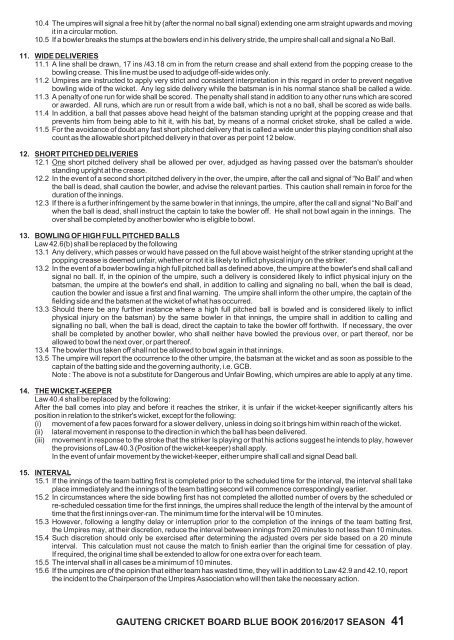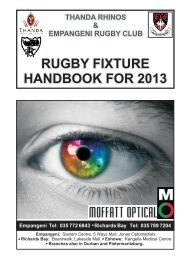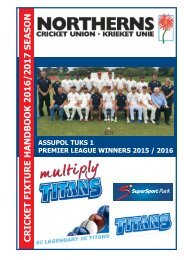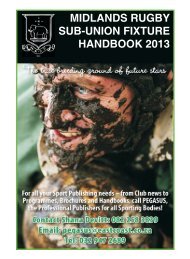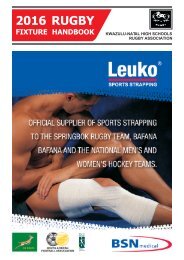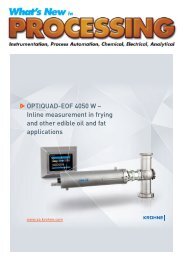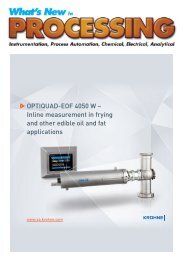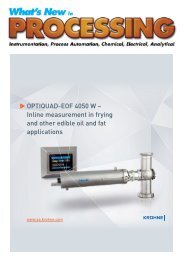Gauteng Cricket Board Blue Book
You also want an ePaper? Increase the reach of your titles
YUMPU automatically turns print PDFs into web optimized ePapers that Google loves.
10.4 The umpires will signal a free hit by (after the normal no ball signal) extending one arm straight upwards and moving<br />
it in a circular motion.<br />
10.5 If a bowler breaks the stumps at the bowlers end in his delivery stride, the umpire shall call and signal a No Ball.<br />
11. WIDE DELIVERIES<br />
11.1 A line shall be drawn, 17 ins /43.18 cm in from the return crease and shall extend from the popping crease to the<br />
bowling crease. This line must be used to adjudge off-side wides only.<br />
11.2 Umpires are instructed to apply very strict and consistent interpretation in this regard in order to prevent negative<br />
bowling wide of the wicket. Any leg side delivery while the batsman is in his normal stance shall be called a wide.<br />
11.3 A penalty of one run for wide shall be scored. The penalty shall stand in addition to any other runs which are scored<br />
or awarded. All runs, which are run or result from a wide ball, which is not a no ball, shall be scored as wide balls.<br />
11.4 In addition, a ball that passes above head height of the batsman standing upright at the popping crease and that<br />
prevents him from being able to hit it, with his bat, by means of a normal cricket stroke, shall be called a wide.<br />
11.5 For the avoidance of doubt any fast short pitched delivery that is called a wide under this playing condition shall also<br />
count as the allowable short pitched delivery in that over as per point 12 below.<br />
12. SHORT PITCHED DELIVERIES<br />
12.1 One short pitched delivery shall be allowed per over, adjudged as having passed over the batsman's shoulder<br />
standing upright at the crease.<br />
12.2 In the event of a second short pitched delivery in the over, the umpire, after the call and signal of “No Ball” and when<br />
the ball is dead, shall caution the bowler, and advise the relevant parties. This caution shall remain in force for the<br />
duration of the innings.<br />
12.3 If there is a further infringement by the same bowler in that innings, the umpire, after the call and signal “No Ball' and<br />
when the ball is dead, shall instruct the captain to take the bowler off. He shall not bowl again in the innings. The<br />
over shall be completed by another bowler who is eligible to bowl.<br />
13. BOWLING OF HIGH FULL PITCHED BALLS<br />
Law 42.6(b) shall be replaced by the following<br />
13.1 Any delivery, which passes or would have passed on the full above waist height of the striker standing upright at the<br />
popping crease is deemed unfair, whether or not it is likely to inflict physical injury on the striker.<br />
13.2 In the event of a bowler bowling a high full pitched ball as defined above, the umpire at the bowler's end shall call and<br />
signal no ball. If, in the opinion of the umpire, such a delivery is considered likely to inflict physical injury on the<br />
batsman, the umpire at the bowler's end shall, in addition to calling and signaling no ball, when the ball is dead,<br />
caution the bowler and issue a first and final warning. The umpire shall inform the other umpire, the captain of the<br />
fielding side and the batsmen at the wicket of what has occurred.<br />
13.3 Should there be any further instance where a high full pitched ball is bowled and is considered likely to inflict<br />
physical injury on the batsman) by the same bowler in that innings, the umpire shall in addition to calling and<br />
signalling no ball, when the ball is dead, direct the captain to take the bowler off forthwith. If necessary, the over<br />
shall be completed by another bowler, who shall neither have bowled the previous over, or part thereof, nor be<br />
allowed to bowl the next over, or part thereof.<br />
13.4 The bowler thus taken off shall not be allowed to bowl again in that innings.<br />
13.5 The umpire will report the occurrence to the other umpire, the batsman at the wicket and as soon as possible to the<br />
captain of the batting side and the governing authority, i.e. GCB.<br />
Note : The above is not a substitute for Dangerous and Unfair Bowling, which umpires are able to apply at any time.<br />
14. THE WICKET-KEEPER<br />
Law 40.4 shall be replaced by the following:<br />
After the ball comes into play and before it reaches the striker, it is unfair if the wicket-keeper significantly alters his<br />
position in relation to the striker's wicket, except for the following:<br />
(i) movement of a few paces forward for a slower delivery, unless in doing so it brings him within reach of the wicket.<br />
(ii) lateral movement in response to the direction in which the ball has been delivered.<br />
(iii) movement in response to the stroke that the striker Is playing or that his actions suggest he intends to play, however<br />
the provisions of Law 40.3 (Position of the wicket-keeper) shall apply.<br />
In the event of unfair movement by the wicket-keeper, either umpire shall call and signal Dead ball.<br />
15. INTERVAL<br />
15.1 If the innings of the team batting first is completed prior to the scheduled time for the interval, the interval shall take<br />
place immediately and the innings of the team batting second will commence correspondingly earlier.<br />
15.2 In circumstances where the side bowling first has not completed the allotted number of overs by the scheduled or<br />
re-scheduled cessation time for the first innings, the umpires shall reduce the length of the interval by the amount of<br />
time that the first innings over-ran. The minimum time for the interval will be 10 minutes.<br />
15.3 However, following a lengthy delay or interruption prior to the completion of the innings of the team batting first,<br />
the Umpires may, at their discretion, reduce the interval between innings from 20 minutes to not less than 10 minutes.<br />
15.4 Such discretion should only be exercised after determining the adjusted overs per side based on a 20 minute<br />
interval. This calculation must not cause the match to finish earlier than the original time for cessation of play.<br />
If required, the original time shall be extended to allow for one extra over for each team.<br />
15.5 The interval shall in all cases be a minimum of 10 minutes.<br />
15.6 If the umpires are of the opinion that either team has wasted time, they will in addition to Law 42.9 and 42.10, report<br />
the incident to the Chairperson of the Umpires Association who will then take the necessary action.<br />
GAUTENG CRICKET BOARD BLUE BOOK 2016/2017 SEASON 41


